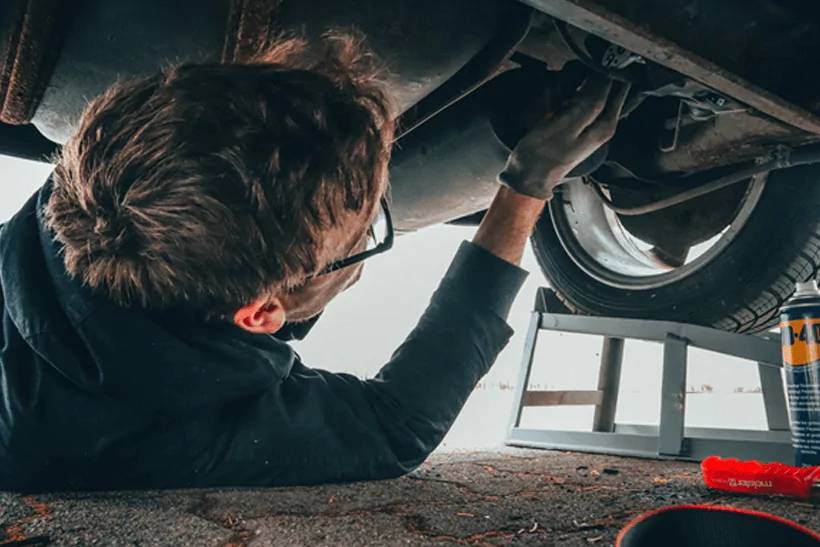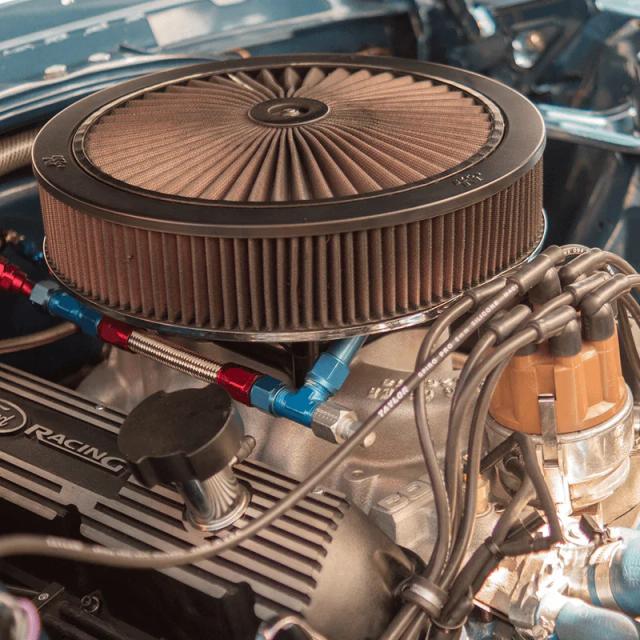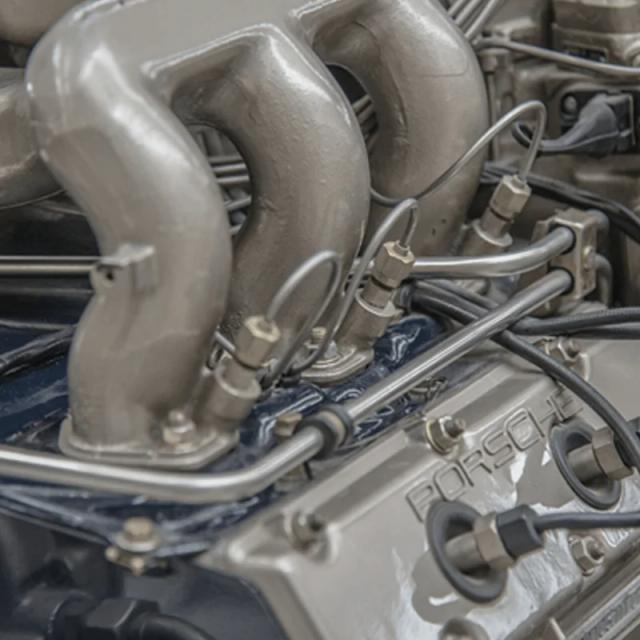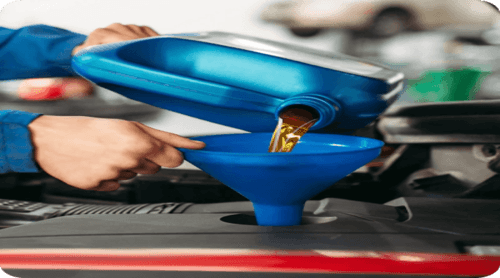
The car oil filter in your car is commonly underestimated. It's responsible for the healthy running of your car's engine. It cleans your engine oil by removing built-up contaminants, ensuring a clean engine over time. So, it's crucial that you know how and when to change the oil filter to keep your vehicle running smoother for longer.
While it might not sound serious, a soiled oil filter can significantly damage your car's engine, resulting in costly repairs. Although this is a critical internal part of your vehicle, you might be surprised to hear you can clean and change your oil filter by yourself. You can find the correct oil filter for your car by heading over to our oil filter page and entering your make, model, or reg number.
This handy car oil filter guide will explain how to save money and restore your car's oil filter at home.
We'll cover:
What Does an Oil Filter Do?
What Oil Filter Should I Use in My Car?
How Often Should I Change My Car Oil Filter?
6 Signs of Oil Filter Problems
How to Remove and Clean the Oil Filter
How to Install a New Car Oil Filter
Car Oil Filter Know-How
What Does an Oil Filter Do?
Your car oil filter is integral to your car's engine system. The engine oil itself is responsible for four main functions:
Helps cool the engine by transferring heat.
Seals the gap between your piston rings and cylinder walls.
Absorbs contaminants.
Suspends soot particles that are created during the combustion process.
It can only do these jobs effectively if it is clean. The oil filter is a mixture of paper and material arranged tactically to trap particles around a few microns in size to stop them from travelling around the engine. This keeps the oil clean, ensuring the engine can run smoothly. You can find a range of premium engine oils for your vehicle in our engine oil section.
Oil Filter Location
In most models, oil filters are located near the middle or at the bottom of the engine and are available in two types: screw-on metal canisters and paper versions that fit within a plastic cylinder. However, both perform precisely the same way, so strictly speaking, neither is "better" than the other.
Oil Filter Saturated
Eventually, the car oil filter will be completely saturated with contaminants and, therefore, unable to absorb any more, meaning toxins can find their way into your engine. So, if you leave your soiled oil filter as is when changing your engine oil, the clean oil you've just added will become just as dirty as the previous batch was as soon as you start up your engine.
Engine Damage
When you neglect to maintain and change your car oil filter, you can cause damage to many different areas of your engine. This means you'll need to be clued up on many things, including how often your oil filter needs changing and how to identify oil filter problems; we will discuss both in the following sections.
What Oil Filter Should I Use in My Car?
Before you learn how to change a car oil filter, you should consider and find out which one is suitable for your car. Luckily, there are several simple ways to determine what car oil filter your car needs. For one, checking your vehicle handbook will provide the necessary details. However, if you've misplaced your manual, contacting the vehicle manufacturer's customer service team will be a good route to go down.
Alternatively, for a quick, fuss-free way to check, you can enter your registration number into the box provided on our homepage to find a range of oil filters to suit your car.
How Often Should I Change My Car Oil Filter?
It's worth noting that each time you change your engine oil, you should also consider replacing your oil filter. You can learn how to change your engine oil with our handy guide.
Generally speaking, your oil filter should last for around 3,000–5,000 miles, but there are a few car oil filter problems that can shorten this period. For example, bad weather can put extra demand on your oil filter. This is because most engine oils are pretty thick, and when your engine heats up, it causes them to become thinner and more liquid. But, when your oil fails to heat up because of cold temperatures, the oil pump attempts to force cold, thick oil through even the smallest engine passages. This, in turn, can penetrate the filter and find its way to essential engine parts.
You should ensure you change your oil filter when the service light shows. Even if you already know that your oil is well topped up, the illuminating service light can mean many problems, including a soiled oil filter, so changing this yourself can help to save you the time and money you'd spend taking it to a mechanic.
These aren't the only circumstances in which your oil filter must be changed. In the next section, we will be discussing how to identify oil filter problems.
6 Signs of Oil Filter Problems
There are a few physical signs that can indicate problems with your oil filter and, subsequently, when you need to perform an oil filter change. These include:
Poor Acceleration
Your car's performance level is one of the most apparent indicators of its internal health. So, if your car struggles when you accelerate, it could be due to a poorly functioning oil filter. While the engine will still run, it won't perform at the same ability it usually can and will end up damaging essential parts of your vehicle.
Sputtering
A sputtering sound from your engine can signal that your oil filter is clogged. As well as being unable to release oil as it should, a blocked car oil filter can cause more significant, more expensive issues further down the line, including an overheating engine. However, be aware that an overheating engine can be caused by several other problems – read our blog on troubleshooting an overheating engine for more advice.
Metal-on-Metal Sounds
When your engine parts aren't well lubricated by oil, you will start to hear strange noises coming from the engine. The first sign is usually a tapping noise from the cylinders, as these are usually the first thing to be starved of oil. If the problem worsens, you may start to hear the sound of metal grinding against metal. This is a severe problem, and you must pull over immediately if you hear these sounds while driving. Your oil filter will need to be replaced, and more oil will need to be added to the engine.
Reduced Pressure
A pressure drop is a cause for concern and can commonly be associated with an oil filter issue. Low oil pressure can create complications for your engine's performance and damage the components inside it. Most modern cars have an oil pressure warning light on the dash, which comes on when the pressure drops to a dangerous level.
Dirty Exhaust Emissions
When your car oil filter is clogged, the emissions from your exhaust will be sooty and dirty, and you'll be able to smell burning oil. This usually means the oil filter will need replacing, and the clog must be removed from your car's engine.
Oil Filter Leaking
If your oil filter leaks, it could be because it's screwed on wrongly or not tight enough. The pressure from the engine, therefore, forces oil to leak out of the filter, so it's important that you know how to install your car oil filter properly. Similarly, using an oil filter that's too small can cause its seal to become loose when attempting to screw the filter into the engine. This means there is space for oil to leak out of. This means you must check what size oil filter your vehicle needs by looking at your vehicle handbook or entering your registration plate into our handy parts feature.
Now you know the signs and symptoms of a faulty car oil filter, you'll need to know how to change your oil filter correctly.
How to Remove and Clean the Oil Filter
Whether your car is displaying issues associated with your oil filter or you're carrying out an oil filter change as you add fresh oil in, you'll need to know how to change your car oil filter properly. This includes knowing how to drain, loosen and remove the oil filter.
Once you've located your oil filter, you can tell which kind it is: the paper version or a screw-on type. For the latter, you should be able to unscrew the cap with some pressure behind your hand. Paper car oil filters have a cap on the cylindrical plastic housing they sit in, which also unscrews. Once open, you can simply lift the paper out.
Using too much force or powerful hand tools can cause the caps or housing to break, but don't worry – we have plenty of replacement oil filter housing and housing covers in case you apply too much pressure.
Be aware that, despite the type of oil filter you have, removing them can cause splashes of oil to be released. So, ensure you wear protective clothing plus hand and eye protection when unscrewing these.
You should also be aware that not all cars have reusable oil filters. While some older models have filters that can be replaced after cleaning, most modern cars require a new filter. So, check which kind is right for your vehicle by checking the owner's manual. This is very important, as cleaning a non-reusable filter could damage your engine.
To remove and clean your car oil filter, you'll need to follow these easy steps:
Use a floor jack, and jack stands (both of which you can find in our range of jacking, lifting, and towing equipment) to raise your car high enough so you can easily access the underneath of the car and the oil filter.
Position a draining pan underneath where the filter is in case any trapped oil leaks out.
Unscrew the bolt or cap holding the oil filter in place by turning it anti-clockwise. You can use latex gloves or a car oil filter wrench if this is too tight. If it still remains stuck, we suggest seeking help from a trained car technician who can help without causing damage to any other important parts of your engine system.
Lower the reusable filter and remove the wire cloth filter you'll find behind the access area.
Use an automobile parts washer or fresh brake cleaner to wash your wire cloth filter in a parts cleaning tank.
Leave the wire cloth filter to air dry completely, place it back into the reusable oil filter case, and secure the access area.
Place the filter back into the oil filter housing and re-tighten the bolt by turning it clockwise by hand.
Lower your car from the jack and stands.
If any oil drippings have made their way onto your draining pan, it's important that you carefully pour these into a container with a secure lid and take it to your nearest oil recycling bank to dispose of it responsibly. Simply pouring the oil down your drain can clog it.
How to Install a New Car Oil Filter
Once you've removed the old one, you can proceed with an oil filter change and install – but not before lubricating it.
Take a small amount of clean engine oil and smear it around the rubber gasket of your new oil filter – this helps it to fit securely inside the engine block. Take a small amount of clean engine oil and smear it around the rubber gasket of your new oil filter – this helps it to fit securely inside the oil filter housing in the engine block. Canister filters will have a rubber seal around the filter face, while element styles will have new o-rings. These must be replaced on the cap and then lubricated to ensure they do not split on fitting.
Clean any excess oil around where the filter screws onto the engine using a fresh cleaning towel.
Screw your new car oil filter into the oil filter housing using a firm hand.
Tighten a further half or three-quarters of a turn using the oil filter wrench.
Car Oil Filter Know-How
Knowing how to remove, clean and install a new oil filter is imperative for good engine health, so take the tips in this guide to ensure you know when and how you'll need to do this. Here at GSF Car Parts, we have a selection of products to help with your oil filter change, including replacement oil filters, engine oil, oil pumps and more. And, with our handy parts recommendations feature, you can find the right components for your vehicle by simply entering your registration plate into the box provided.
Shop Oil Filters at GSF Car Parts Online and In-Store
All our oil filters are from trusted brands in the motoring industry, so you can count on them to be reliable and of excellent quality. Plus, our low-price promise means you can always expect great value, too.
We offer free UK delivery on all online orders over £25, plus 60-day returns*. We also know you want to get your car up and running as soon as possible, which is why we offer a Click and Collect service that allows you to get your new oil filter in just an hour.
So, buy oil filters from us with confidence today. Or if you're close to one of our 180 store locations across the UK & Ireland, drop by. Our experienced staff will be able to direct you to the correct part for your vehicle.





